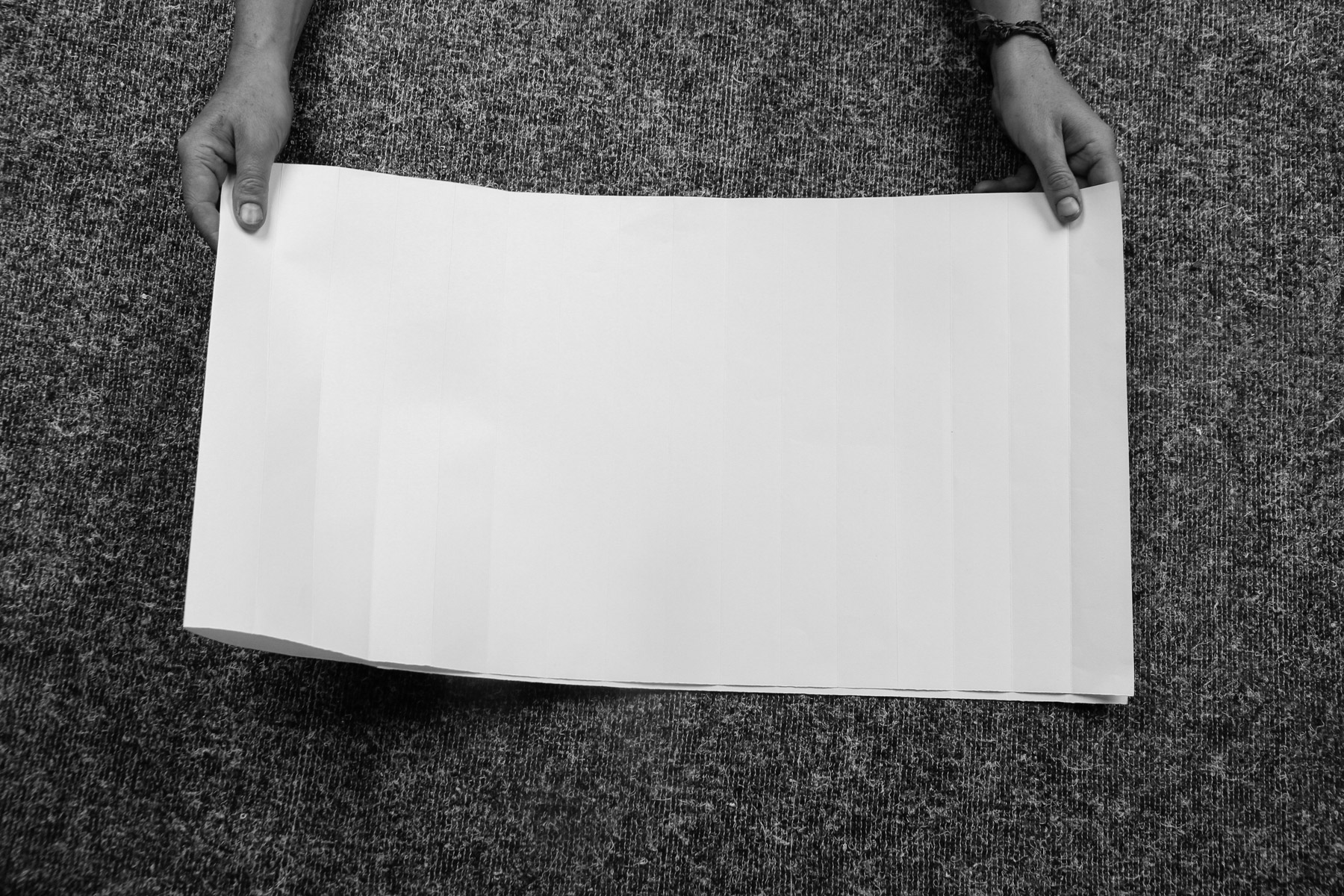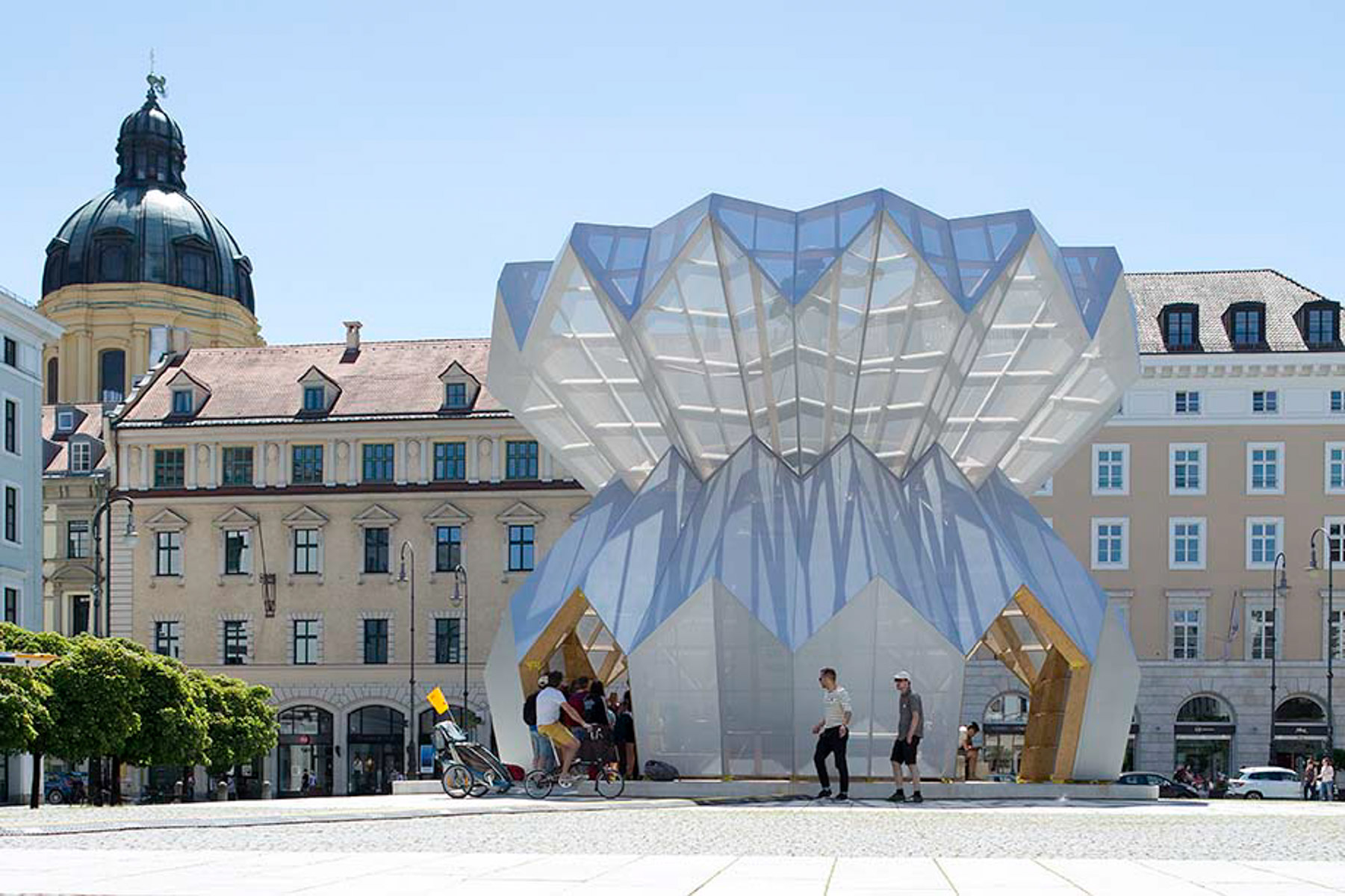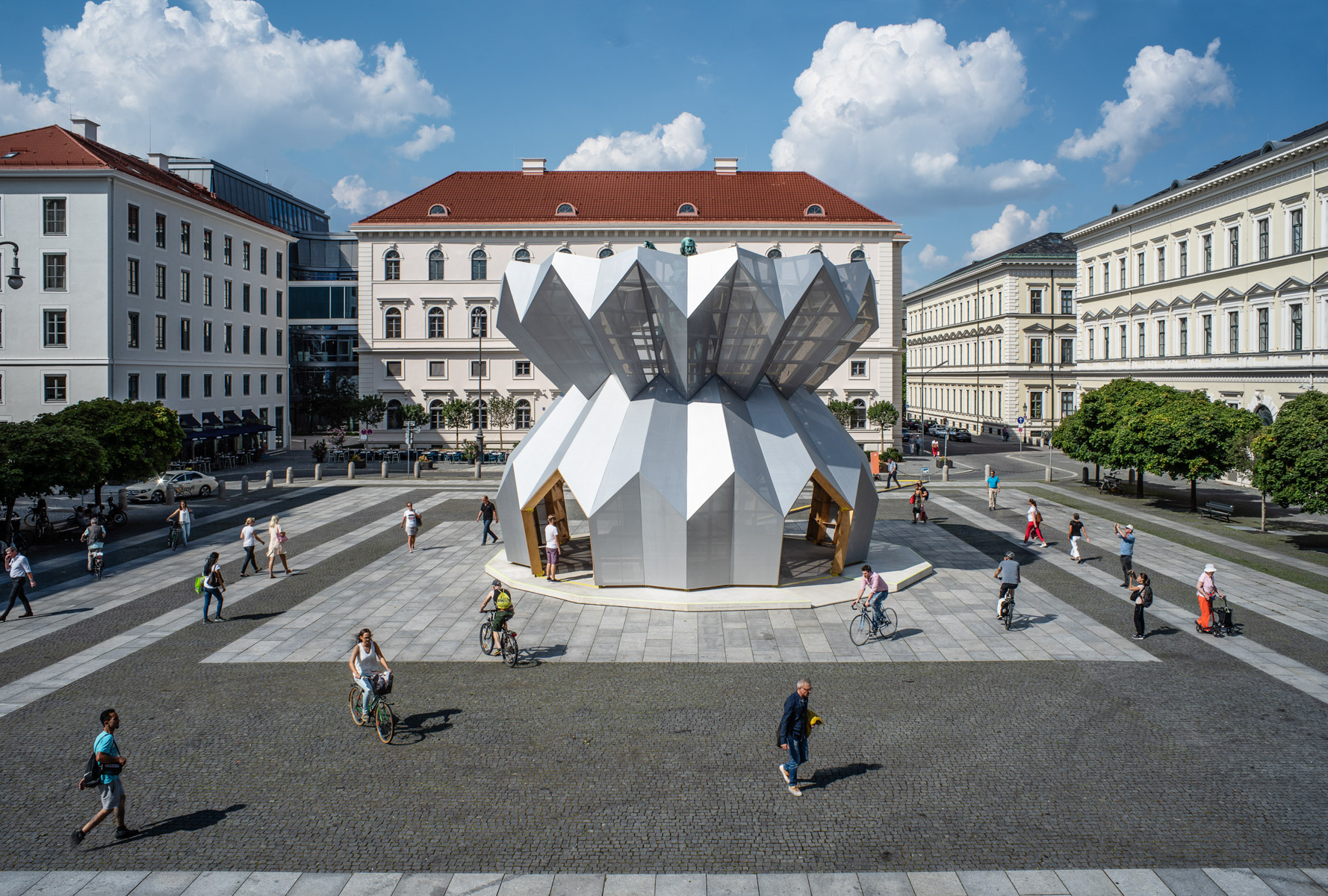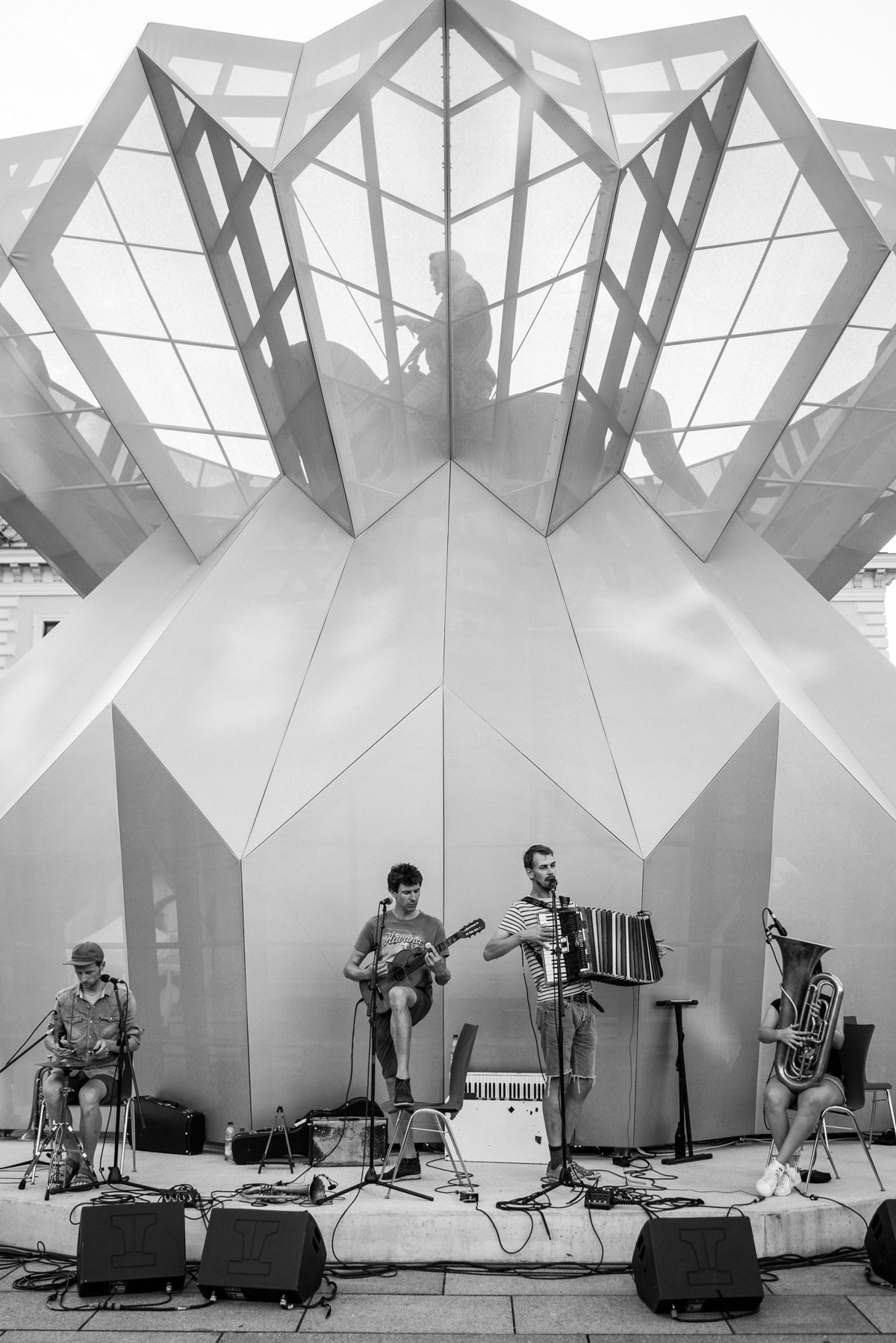2018, Munich, Germany
I Will Be With You, Whatever
Timber and engineered fabric, 9.9 x 11.8 x 11.8 m
Commissioned by the Munich street magazine BISS on the occasion of their twenty-fifth anniversary




















I Will Be With You, Whatever was a gift from the street magazine BISS to the citizens of Munich to mark its twenty-fifth anniversary. BISS is the oldest street newspaper in Germany. It is sold by homeless or once-homeless people as a self-help project, and many of its articles are also written by the homeless. Its name, which in English means ‘bite’, is an acronym of ‘Burger in sozialen Schwierigkeiten’ (Citizens in difficulty).
The Morisons’ structure was based on the concept of a simple rectangle that takes its refined forms solely through the process of folding. The sculpture created in this manner resembled a fairground carousel or a candy. At the same time, it was a sign for the preservation of public space as a meeting place for all inhabitants of the city. For BISS and their work, the work’s title signifies supporting poor, ill, and homeless people and helping them to overcome severe life crises. The promise – to not leave someone alone – also holds true in the reverse: poor people will always remind us through their presence that an equitable society must create the basis of existence for all.
The Morisons’ structure was based on the concept of a simple rectangle that takes its refined forms solely through the process of folding. The sculpture created in this manner resembled a fairground carousel or a candy. At the same time, it was a sign for the preservation of public space as a meeting place for all inhabitants of the city. For BISS and their work, the work’s title signifies supporting poor, ill, and homeless people and helping them to overcome severe life crises. The promise – to not leave someone alone – also holds true in the reverse: poor people will always remind us through their presence that an equitable society must create the basis of existence for all.
In situ in central Munich’s Wittelsbacherplatz for three months, I Will Be With You, Whatever operated particularly with public space. With its four entrances, the sculpture invited entry and exploration. It thereby followed the historical function of public pavilions. While in the past these forms played an important role in the creation of squares, parks, and gardens as places of gathering, they appear rarely in contemporary city design. I Will Be With You, Whatever transformed a space where usually few people come together to meet, gather, or rest.
Inside the pavilion stood the partially obscured equestrian statue of Maximilian I, who ruled Bavaria from 1623 to 1648. Seen from the edge of the square, just his head and raised hand protruded from the sculpture. Depending on light conditions, the statue was either concealed or revealed through the skin of the structure. Illumination of the statue at night ensured that it was visible inside the pavilion from afar. This play with visibility and invisibility was aimed at the issue of public attentiveness. Our coexistence in everyday life is often defined by the mutual awareness of others. The participation of people who live on the fringes of society can depend on their visibility in the public sphere. At the same time, people can be excluded by invisible boundaries, thresholds, or obstacles. The partial veiling of Maximilian I not only calls attention to the statue itself but also to our own perception of every single person.
Inside the pavilion stood the partially obscured equestrian statue of Maximilian I, who ruled Bavaria from 1623 to 1648. Seen from the edge of the square, just his head and raised hand protruded from the sculpture. Depending on light conditions, the statue was either concealed or revealed through the skin of the structure. Illumination of the statue at night ensured that it was visible inside the pavilion from afar. This play with visibility and invisibility was aimed at the issue of public attentiveness. Our coexistence in everyday life is often defined by the mutual awareness of others. The participation of people who live on the fringes of society can depend on their visibility in the public sphere. At the same time, people can be excluded by invisible boundaries, thresholds, or obstacles. The partial veiling of Maximilian I not only calls attention to the statue itself but also to our own perception of every single person.
Photographers’ credits
Hans Albrecht Lusznat / Stephanie Kern / Hannes Rohrer / Rainer Viertlböck / Ivan Morison
Hans Albrecht Lusznat / Stephanie Kern / Hannes Rohrer / Rainer Viertlböck / Ivan Morison